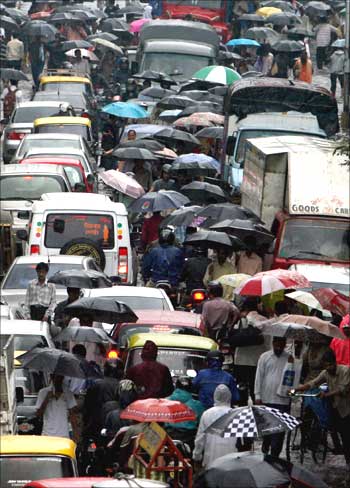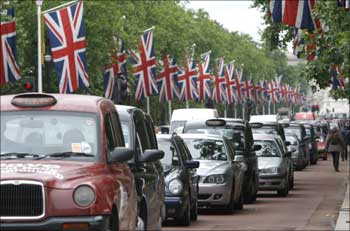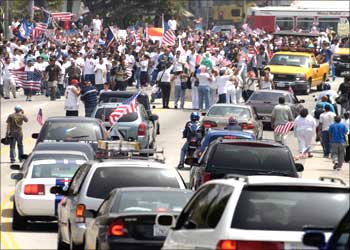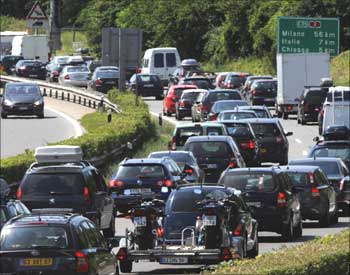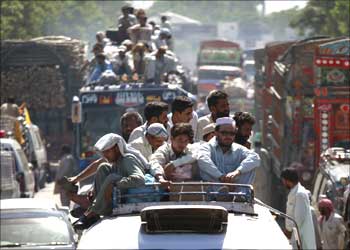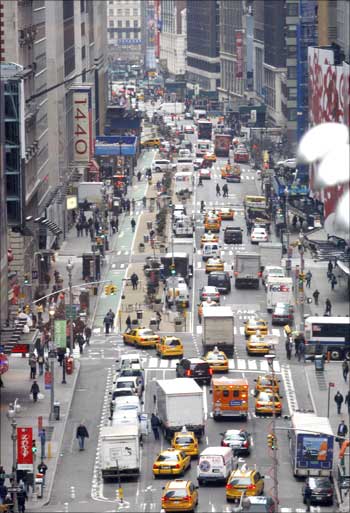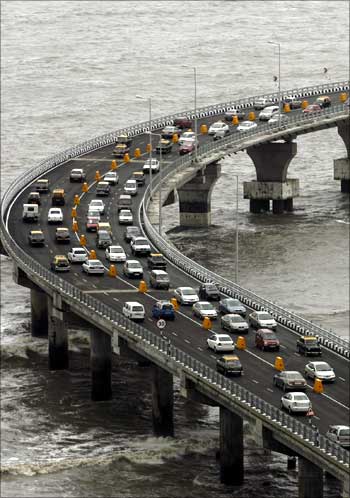 | « Back to article | Print this article |
Traffic snarls may soon be history
Worsening traffic is making travelling by car an increasingly frustrating and unpleasant experience.
Therefore, companies around the world are working towards a new generation of monitoring and data-gathering technologies that could radically change the way we plan and drive our journeys.
Traffic snarls may soon be history
The technologies, according to researchers, should deliver more accurate information on traffic densities to help us avoid jams, as well as real-time advice on journey times and fuel consumption based on the way we accelerate and brake.
In-car monitors could even help especially safe drivers benefit from reduced insurance premiums by demonstrating to insurance companies that they are at lower risk of accidents.
Traffic snarls may soon be history
While most traffic monitoring today is using wire induction loops, which are buried under main roads to detect when vehicles pass, more sophisticated devices are needed to fit into existing road infrastructure without having to dig up the road.
Thus, researchers at the University of Cambridge Computer Laboratory have come up with a solution-to attach wireless infrared sensors to lampposts.Traffic snarls may soon be history
"The thing about lamp posts is that they are everywhere. They also have available power, making them "ideal for building a dense network of sensors throughout cities such as Cambridge," New Scientist quoted David Evans, who leads the project, as saying.
Another idea, being tested by researchers at the University of California, Berkeley, is to gather information about vehicle speeds and traffic levels from drivers' GPS-enabled cellphones.
Traffic snarls may soon be history
The Mobile Millennium project, being run in partnership with phone company Nokia and digital map provider NAVTEQ, blends encrypted location data with traffic information from other sources before broadcasting the resulting travel information back to users' phones.
Microsoft Research has developed a system called JamBayes that continuously analyses current and historical traffic trends to make inferences about the future conditions of roads.
It not only predicts future journey times and plots congestion-free routes, but can also warn drivers to leave earlier in order to avoid impending gridlock.
Traffic snarls may soon be history
A traffic prediction company in the UK is taking this a step further with a system called MyDrive.
"MyDrive actually learns how you drive, and then applies this to work out more accurate journey times," said John Holland, head of Journey Dynamics, the Surrey-based company that developed it.
It measures dozens of individual driving traits, such as the way someone accelerates or the speeds at which they drive in different road conditions.
Traffic snarls may soon be history
Besides allowing users to predict arrival times more accurately, MyDrive could be used to help reduce a driver's insurance premiums, says Holland.
Also, the researchers have suggested that such personal data feedback could be used to encourage more environmentally friendly driving.
Transport Research Laboratories in Crowthorne, UK has developed a type of cruise-control software called Sentience that optimises the acceleration and deceleration of a vehicle to reduce the fuel it burns.
